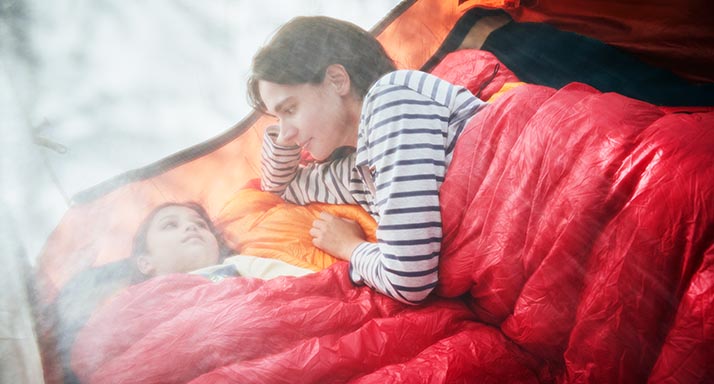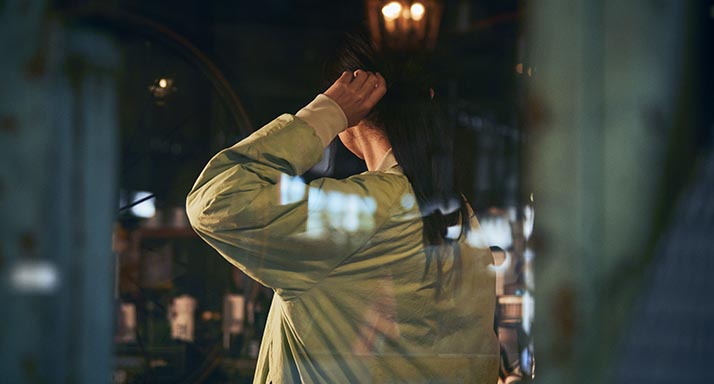HINOC RECIPE
Tune your five senses to the dancing fire and cook up a feast.
INTERVIEW
JUNJI KOSUZUME
OUTDOOR COORDINATOR
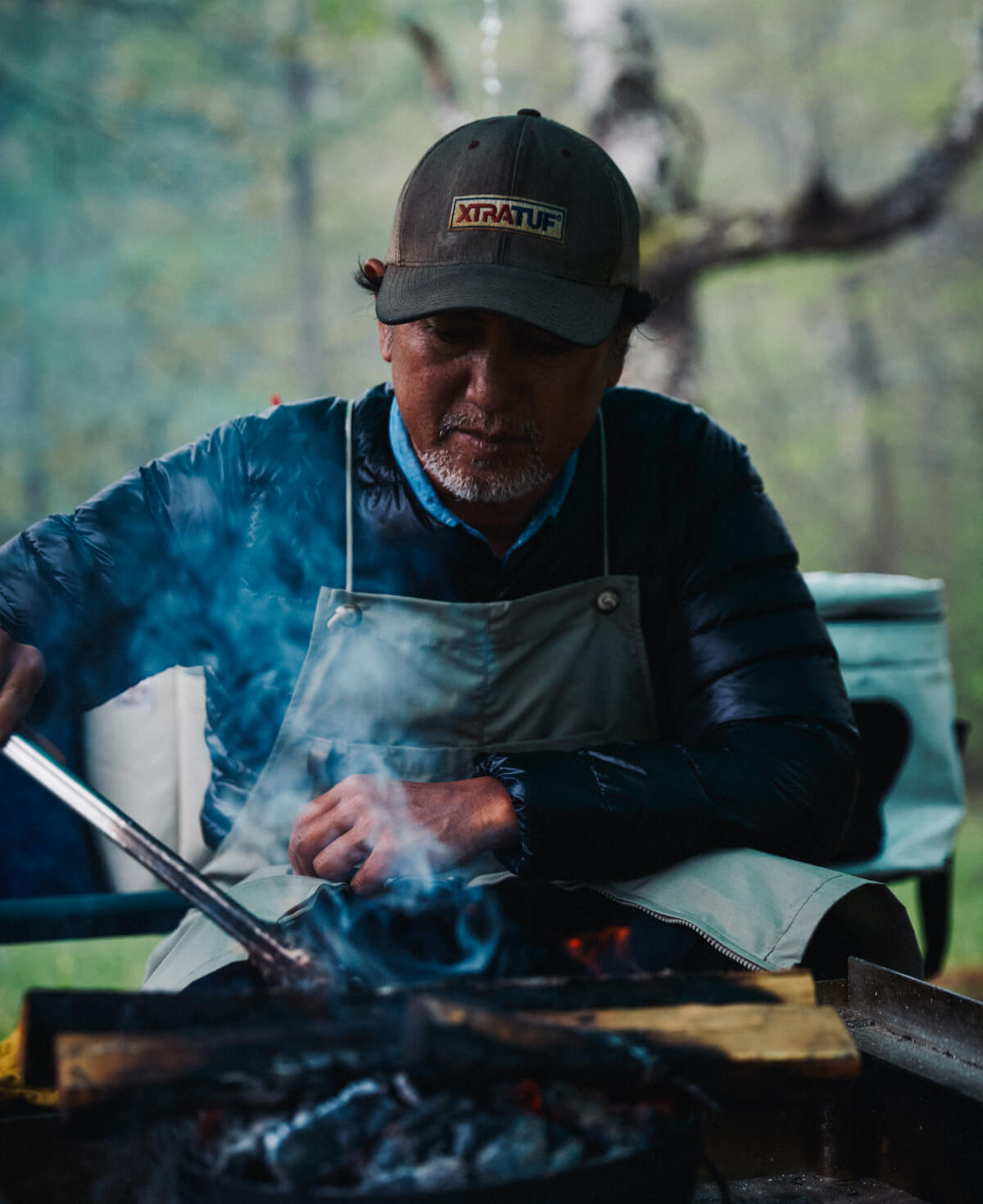
Outdoor cooking is fun and delicious,
even without spending too much time and effort
“For me, campfires are for keeping warm and cooking food,” says Junji Kosuzume while feeding more wood into the fire as it sparks and crackles. He discovered the wonders of the great outdoors when he began riding mountain bikes in his twenties, and before he knew it, he was communicating the marvels of the wilderness to others as an outdoor coordinator. This title is only fitting as he fulfills many roles, from spatial designing to supporting activities as a guide in addition to cooking. The love of cooking goes back to Junji’s younger days, and he has served up dishes for his friends and family at home, at the beach, or in the mountains. Kosuzume currently demonstrates his culinary skills not only at events and tours but also in his café, Suzumeya, located in the town of Miura in Kanagawa Prefecture. When asked what the appeal of outdoor cooking was for the culinarian, Kosuzume replied, “When we want to start a campfire, whether it’s at the beach, in the mountains, or at the river, the first thing we would do together is to collect wood. We’ll gather around the fire for a cookout and enjoy the freshly prepared food, where I have a good view of all the delighted faces saying how good the food is. I like that feeling of togetherness and intimacy.”
Enjoying a feast with all five of your senses in a completely open space is possibly better than being in any restaurant. Kosuzume emphasizes that you don’t need to be overambitious with the food when you are already blessed with a great location. “If you put too much effort into the cooking, you may end up spending the entire day preparing and cleaning up. What’s important in a cookout is that sometimes you need to let loose to a certain extent and not put in too much effort. Even if you cut some corners, it’s still going to taste great when you’re enjoying it outside, and you might as well indulge in all the fun while you’re immersing in nature.”
JUNJI KOSUZUME
Junji Kosuzume is an outdoor coordinator, known for his media appearances in events and magazines. Through his works as a spatial designer, lecturer, and culinarian, he communicates the ways and wonders of spending time in the great outdoors. He is also the author of many books including “Outdoor Ryori no Hon (焚き火料理の本)” (lit. “The Book of Campfire Cooking”) and “Mujin-chitai no Asobikata (無人地帯の遊び方)” (lit. “Ways to Enjoy the Backcountry”), among others. On the weekends, the outdoor expert demonstrates his culinary mastery at Suzumeya (雀家), located in the town of Miura, Kanagawa Prefecture.
01
BACON AND CHEESE HOT SANDWICH
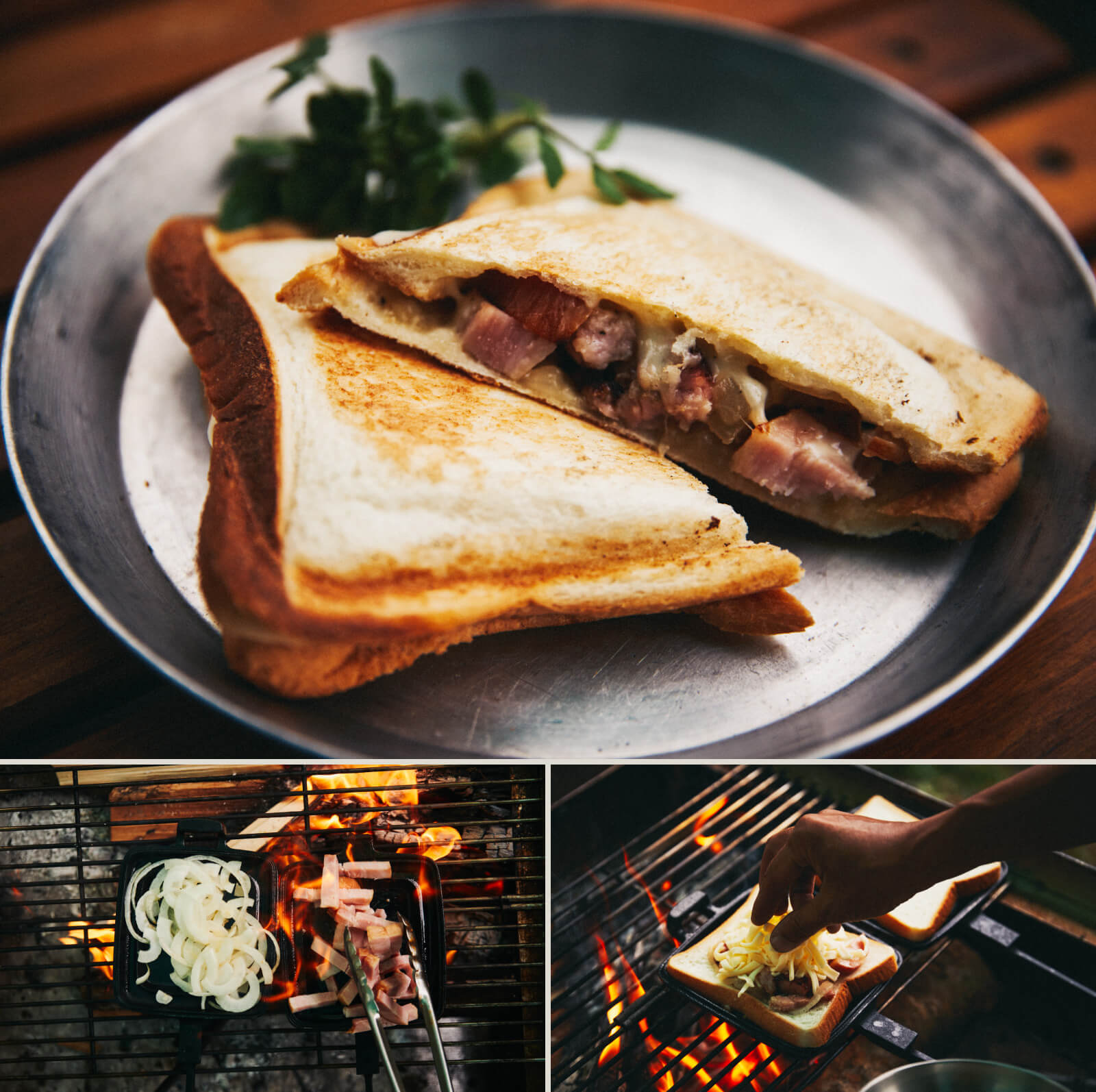
INGREDIENTS
- 2 thick strips of bacon
- 1/2 onion
- 1 tablespoon olive oil
- 100 g shredded cheese
- 2 slices of sandwich bread
- Black pepper to taste
-
Using a hot sandwich maker that comes apart, heat both pans on medium heat, grease them with olive oil, and sauté the sliced onions and matchstick bacon pieces until slightly browned.
-
Wipe the sandwich maker clean, place a slice of bread on each pan, and top the bread with the sauteed bacon and onions. Season with black pepper, top one side with cheese, sandwich the two sides together, and grill both sides of the pan twice until well toasted.
-
Cut the sandwich to your preference and serve on a plate.
02
CAJUN SHRIMP
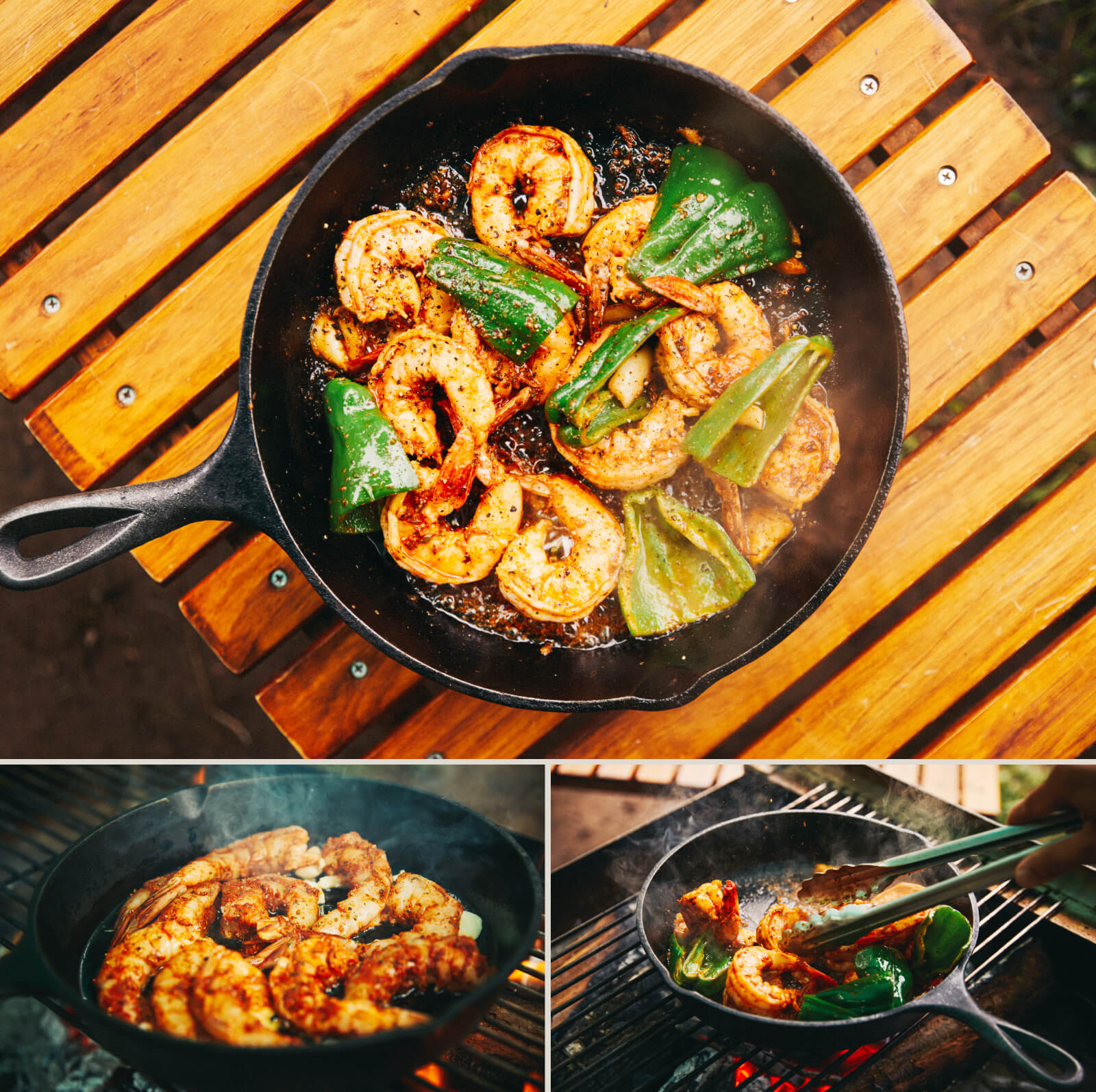
INGREDIENTS
- 10 large frozen shrimps
- 2 bell peppers
- 1 clove of garlic
- 30 ml olive oil
- 2 tablespoons Cajun seasoning
- Black pepper to taste
- Salt to taste
-
Peel and devein the shrimps, wipe clean, and sprinkle salt over them. Remove the stem and seeds from the bell peppers and chop them to your preference.
-
Trim the root end of the garlic clove, remove the green sprout and skin, and crush the clove. Place the garlic in the skillet, add in the olive oil, and heat over medium heat. Once the garlic becomes aromatic, add in the shrimp and sauté until well combined with the oil. Add in the Cajun seasoning and toss until combined.
-
Add in the bell peppers and toss until combined.
Season with black pepper and serve.
03
ROAST BEEF
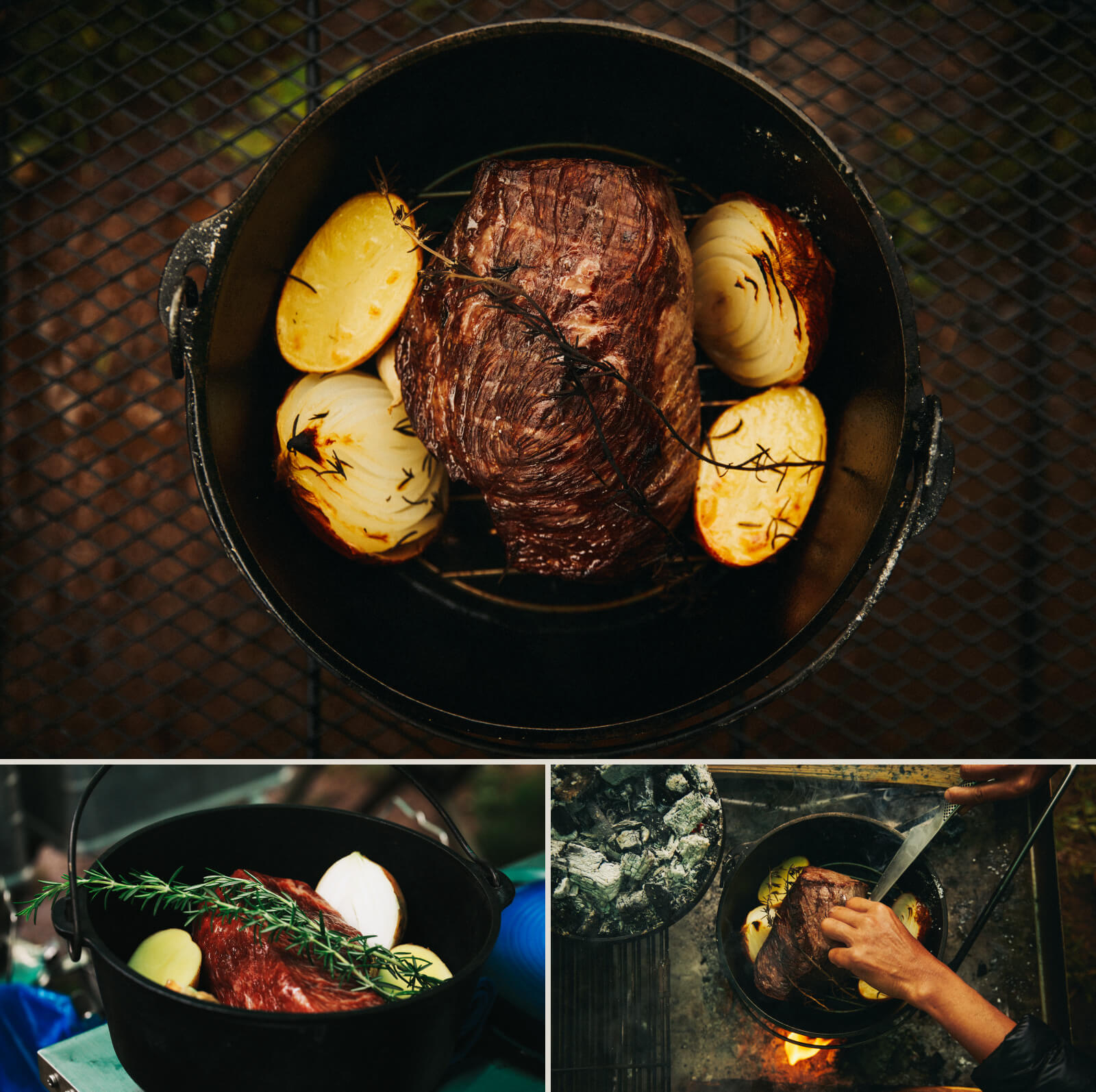
INGREDIENTS
- 800 g to 1 kg round roast
- 1 onion
- 1 potato
- 2 sprigs of rosemary
- 30 ml soy sauce
- Black pepper to taste
- Salt to taste
-
Season the roast evenly with salt and let sit. Cut the onion in half with the skin on. Wash the potato well and cut it in half.
-
Insert a roasting rack into the Dutch oven. Place the roast and vegetables on the rack and lay the rosemary on the roast before closing the lid.
-
Place the Dutch oven on the campfire stand. Place 12 preheated charcoal briquettes on the lid and 5 under the pan and cook for 30 minutes. Check occasionally for doneness and adjust the cooking temperature (number of coals) if necessary.
-
Once completely cooked, take out the roast and let it rest for 10 minutes to allow the juices to settle.
-
Carve into slices and serve on a plate together with the roasted onions and potatoes on the side. Make gravy by combining the drippings with soy sauce and serve with the dish.
04
CREAMY MUSHROOM PASTA
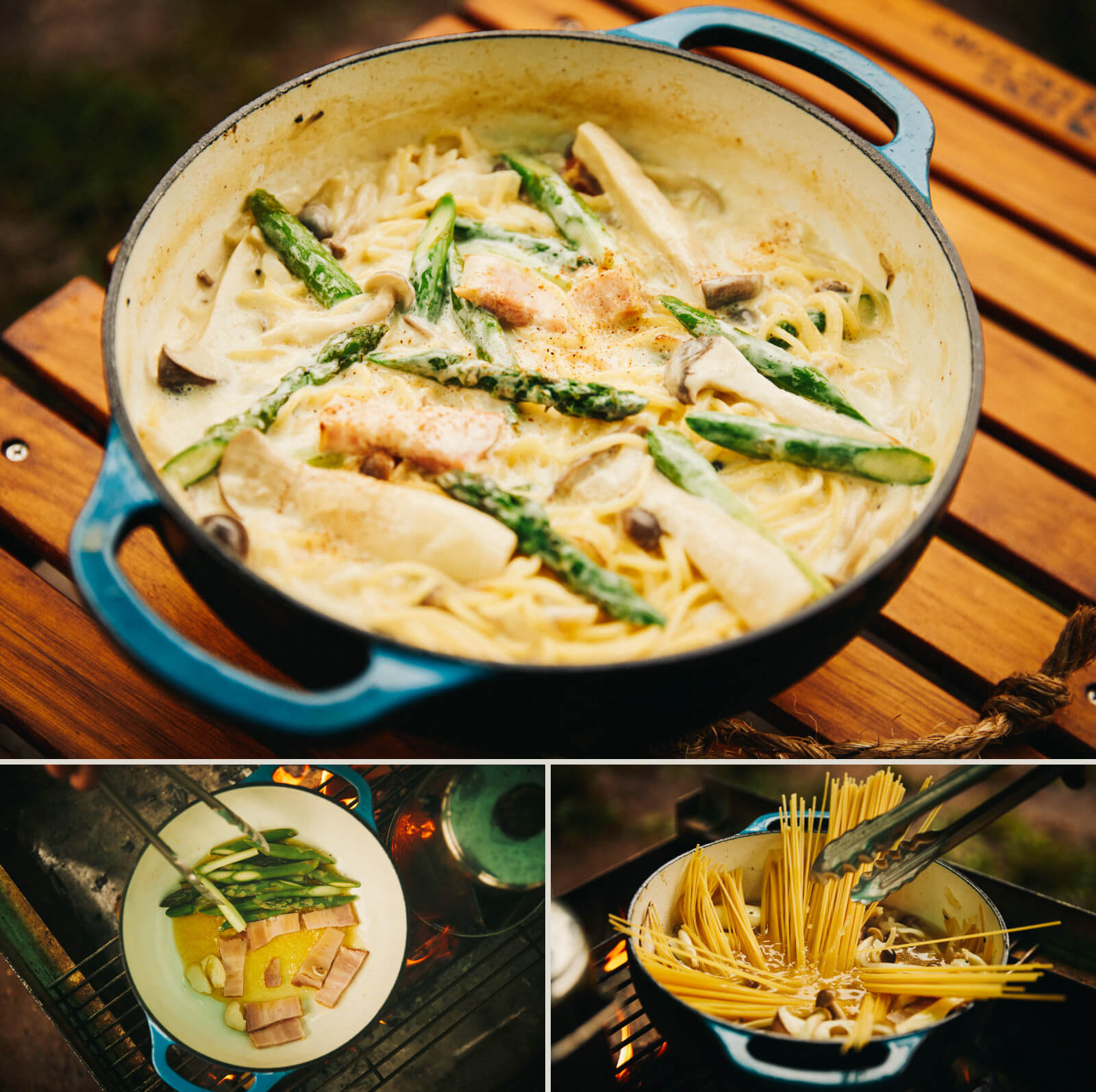
INGREDIENTS
- 200 g spaghetti pasta
- 30 g shimeji mushrooms
- 2 king trumpet mushrooms
- 100 g thick strips of bacon
- 2 spears of asparagus
- 1 clove of garlic
- 30 ml olive oil
- 200 ml heavy cream
- Nutmeg to taste
- Salt to taste
-
Trim off the stem ends of the mushrooms and break them off into smaller pieces. Cut the tough ends of the asparagus, about 5 cm, and chop each spear into four pieces. Trim the root end of the garlic, remove the green sprout and skin, and crush the clove. Slice the bacon into matchsticks.
-
Heat the Dutch oven over medium heat. Add garlic and olive oil and heat them until the garlic becomes aromatic. Add in bacon and asparagus, sprinkle with 2 teaspoons of salt, and sauté until slightly browned. Take out the asparagus and keep sauteing the shimeji and king trumpet mushrooms until golden brown.
-
Add in 300 ml of water and pasta, and boil the pasta, stirring occasionally. The liquid will eventually evaporate and become creamy in texture about two minutes before the pasta cooking time. This is where the heavy cream should be added. Combine everything in the pot.
-
Taste and add salt if necessary. Add in the cooked asparagus, sprinkle nutmeg powder and black pepper to taste, and you’re all set!
